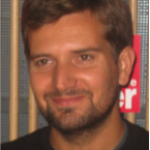Link to Pubmed [PMID] – 24124131
Dev Neurobiol 2014 Feb;74(2):113-22
The genetic heterogeneity of neuropsychiatric disorders is high, but some pathways emerged, notably synaptic functioning. A large number of mutations have been described in genes such as neuroligins, neurexins, and SHANK that play a role in the formation and the maintenance of synapses. This review focuses on the disorders associated with mutations in SHANK3 and the other members of its family, SHANK1 and SHANK2. SHANKs are scaffolding proteins of the postsynaptic density of glutamatergic synapses. SHANK3 has been described in the Phelan-McDermid syndrome (PMS), but also in autism spectrum disorders (ASD) and schizophrenia associated to moderate to severe intellectual disability (ID) and poor language. The evolution of patients with PMS includes symptoms of bipolar disorder and regression. SHANK2 has been identified in patients with ASD with mild to severe ID. SHANK1 has been associated with high-functioning autism in male patients, while carrier females only display anxiety and shyness. Finally, based on neuropathological findings in animal models and patients, a possible role of SHANK in Alzheimer’s disease is discussed. Altogether, this review describes the clinical trajectories associated with different mutations of the SHANK genes and provides information to further investigate the role of the SHANK genes in neuropsychiatric disorders.



